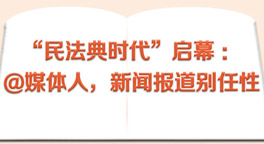Comparison of terminal indicators scoring methods between ESGB and EEWH【2】
2.2 EEWH
Taiwan’s GBRT was initiated in 1995 by the Council for Sustainable Development under the Ministry of the Interior (MOI) in Taiwan. Subsequently, in 1999, the highest advising agency of architectural research and development (ABRI) established the EEWH, on the foundation of the studies into Taiwan’s subtropical climate and the energy use, water supply, sewage discharge and environmental conservation patterns of local buildings, seven indicator groups including Greenery, On-site Water Retention, Daily Energy Saving, CO2 Reduction, Construction Waste Reduction, Water Resource and Sewage & Garbage Improvement were set in this original version of EEWH. Based on the feedback from various disciplines, this early form was revised in December 2002 and added two more indicator groups, Biodiversity and Indoor Environment. Till then, EEWH was developed as a novel system with nine indicator groups. In 2011, In order to tailor to the different types of buildings, the EEWH family was developed by the National Cheng Kung University under the commission of the Architecture and Building Research Institute (ABRI). Meanwhile, ABRI has amended the initial version of EEWH (1999 Evaluation Manual for Green Building) and named it as the EEWH-BC (Basic Category). Utilizing it as the generic version and the basis for other specific building categories, the listed four - EEWH-EC (Ecological Community, 2009), EEWH-GF (Green Factory, 2010), EEWH-RN (Renovation, 2010) and EEWH-RS (Residential, 2011) - were added to complement the initial framework for the EEWH family embracing five specific schemes. The applicable subjects of those five specific systems are detailed in the Tab. 2 [13].
2.3 Version selection of ESGB and EEWH
The up-to-date version of two GBRTs -ESGB (2014 version) and EEWH (2015 version)- was chosen as comparative samples, so as to ensure the timeliness of this study. It is noteworthy that, as shown in Tab. 2, the EEWH (2015 version) is a family embracing five members. Considering that EEWH-BC is the most generic edition and other four specific schemes, EEWH-EC, EEWH-GF, EEWH-RN, and EEWH-RS, are developed from EEWH-BC, the EEWH-BC was the most typical one. Therefore, EEWH-BC (2015 version) was selected as the peer of ESGB (2014 version) in the following comparison. In other words, ESGB (2014 version) and EEWH-BC (2015 version) were chosen as two comparative study samples in this paper and they will be marked as ESGB and EEWH correspondingly in the following chapters, to simply express.
3. Methodology
As shown in Fig. 2, five steps will be conducted in this study. Firstly, the similarity of QES between ESGB and EEWH will be verified to ensure the feasibility of the comparison on SMTI. Secondly, on the foundation of the knowledge from evaluation science, the total SMTIs utilized in the two GBRTs will be analyzed, re-categorized into several SMTI types. Thirdly, based on the SMTI types regrouped in the last section, whole terminal indicators of ESGB and EEWH will be classified into their corresponding SMTI type respectively and the utilization rates of each SMTI in ESGB and EEWH will be calculated correspondingly in this step. Additionally, two aspects of SMTI including utilization types and corresponding using rates in two GBRTs (ESGB and EEWH) will be compared. Finally, based on the comparison results of the last step, a discussion will be conducted and refinement suggestions for ESGB will be provided.
4. QES Comparison between ESGB and EEWH
4.1 The comparability validation in QES between ESGB and EEWH
The similarity and comparability of QES in two GBRTs will be compared and validated initially. As shown in Fig. 3 and Fig. 4, a similar hierarchical structure was adopted in both ESGB and EEWH’s EQSs and indicator systems, since that they were developed under the Analytical Hierarchy Process (AHP)[14,15]. AHP is a structured technique for organizing, formulating and analyzing complex decisions, on the foundation of matrix algebra and psychology[3,16,17], which was developed by Thomas L. Saaty[18]. “The hierarchical structure used in formulating the AHP model can enable all members of the evaluation team to visualize the problem systematically in terms of relevant criteria and sub-criteria.” [17] The establishment principle of this hierarchy model is based on decomposition[19]. Specifically, under some special regulations, the first step is decomposing the evaluation goal to several criteria, and the second and other steps are a similar process: breaking down those criteria to the indicators of next level until to obtain series of terminal indicators (TI). “Each level in the hierarchy corresponds to the common characteristic of the elements in that level”. [17]
It is noteworthy that the terminal indicators didn’t be reflected in Fig. 3 and Fig. 4. To be specific, each indicator category marked as Level 3 in Fig. 3-4, is also a hierarchy system where the TIs locate in the bottom level and each indicator category contains its several corresponding TIs.
The similar QES structure utilized in two GBRTs laid a solid foundation for SMTI comparison between ESGB and EEWH followed, and the research scope in this research is focused to the SMTIs of two GBRTs since nationality and reliability of SMTI are the cornerstone of QES in GBRTs.
4.2 The re-categorization of SMTIs utilized by ESGB and EEWH
Incorporating the characteristics of green building evaluation, the research outcomes from evaluation science[20,21] were served as a foundation then were modified, replenished and clarified into eight SMTI types, embracing direct scoring method (DSM), multiple option method (MOM), interval assignment method (IAM), formula scoring method (FSM), artificial scoring method (ASM), classification method (CM), decomposition-combination method (DCM) and multi-combination method (MCM).
It is noteworthy that the CM and DCM are unable to quantitative assess directly, and need to combine with one to several methods among five independent methods, including DSM, MOM, IAM, FSM, and ASM, to achieve quantitative evaluation, thus CM and DCM are classified into auxiliary method type, Specifically, The definitions of those eight types of SMTI are illustrated in Tab. 3.
 |  |
分享让更多人看到 
推荐阅读
相关新闻
- 评论
- 关注































 第一时间为您推送权威资讯
第一时间为您推送权威资讯
 报道全球 传播中国
报道全球 传播中国
 关注人民网,传播正能量
关注人民网,传播正能量